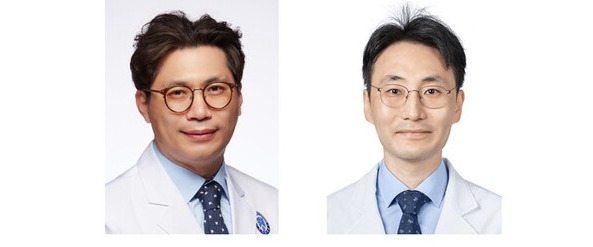The mortality rate after acute myocardial infarction (AMI) was found to be higher among self-employed insured individuals than among employed insured individuals under Korea’s national health system.

A joint research team -- led by Professor Kang Hee-taik of the Department of Family Medicine at Severance Hospital and Professor Won Ho-youn of the Cardiovascular-Arrhythmia Center at Chung-Ang University Hospital -- reported on Wednesday that mortality differed between self-employed and employed insured patients who had previously suffered from AMI.
The study results were published in the latest issue of Nutrition, Metabolism & Cardiometabolic Diseases.
Among cardiovascular diseases -- a leading cause of death worldwide -- AMI is particularly known for its high mortality and recurrence rates. In response, the research team conducted a comparative analysis of AMI, a common yet highly fatal condition, in relation to the types of health insurance coverage provided under Korea’s universal healthcare system.
Health insurance in Korea is divided into two main types: employed insured, for salaried workers, and self-employed insured, which includes the self-employed, unemployed, and others. Regardless of the type, insurance premiums vary based on income, allowing for further classification into high- and low-income groups within each category.
It is already well-established that mortality is significantly influenced by socioeconomic factors such as education level, occupation, and financial status. Socioeconomic status also affects engagement in preventive health activities and access to quality healthcare services.
Using data from the National Health Insurance Service (NHIS), the research team analyzed a total of 5,971 patients diagnosed with AMI over a one-year period starting in 2007, selected from an initial pool of 31,938 individuals. Patients with conditions that could affect mortality outcomes -- such as a prior diagnosis of cancer -- were excluded. The final cohort was divided into 4,329 employed insured and 1,642 self-employed insured individuals.
Each insurance type was further stratified into tertiles (high, middle, low) based on premium levels, which reflect income. Over a median follow-up period of 13.5 years, the study found that the mortality rate among self-employed insured patients was 1.11 times higher than that of employed insured patients.
Among the self-employed group, those in the lowest income tertile had a 1.34 times higher mortality rate compared to those in the middle and highest tertiles. In contrast, no significant mortality difference was observed between income levels within the employed insured group.
The researchers concluded that socioeconomic status -- particularly job type and income -- has a substantial impact on long-term mortality after AMI. Notably, mortality varied sharply by income level among self-employed insured individuals.
The findings suggest that healthcare disparities, including differences in access to medical services and awareness of healthy living, continue to influence health outcomes. The team noted that employed insured individuals typically benefit from more stable income and better access to regular health checkups, whereas self-employed insured individuals may face greater barriers due to healthcare costs, limited health literacy, and lower levels of physical activity.
“Our study confirms the existence of health inequality driven by differences in socioeconomic status,” said Professor Kang Hee-taik. “There is a clear need for targeted health policies, particularly those aimed at improving health education and early cardiovascular screening for the self-employed insured population.”
Related articles
- Severance Hospital surpasses 3,000 hearing implant surgeries
- BTS Suga helps fund Korea's largest artist-backed autism center at Severance
- Severance Hospital named global training hub for FARAPULSE PFA system
- Severance Hospital tops KS-WEI list for 19 straight years
- Yonsei Cancer Center expands heavy ion therapy to hard-to-treat cancers
- Korea urges G20 to strengthen global cooperation for universal health coverage

